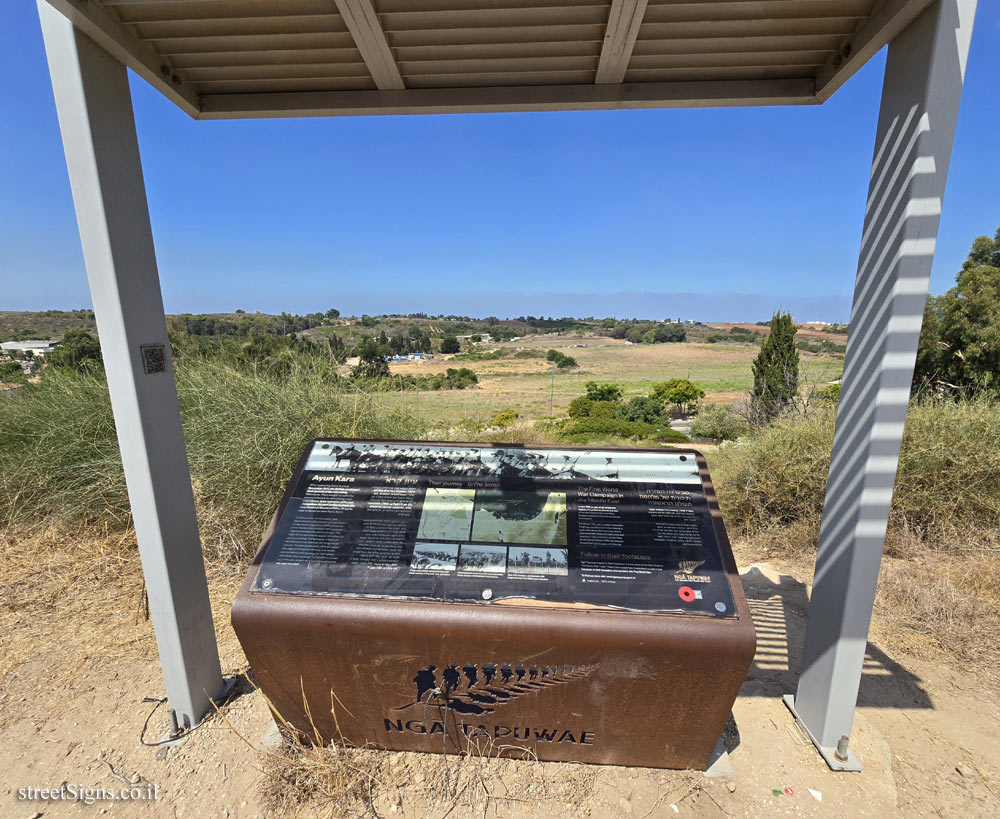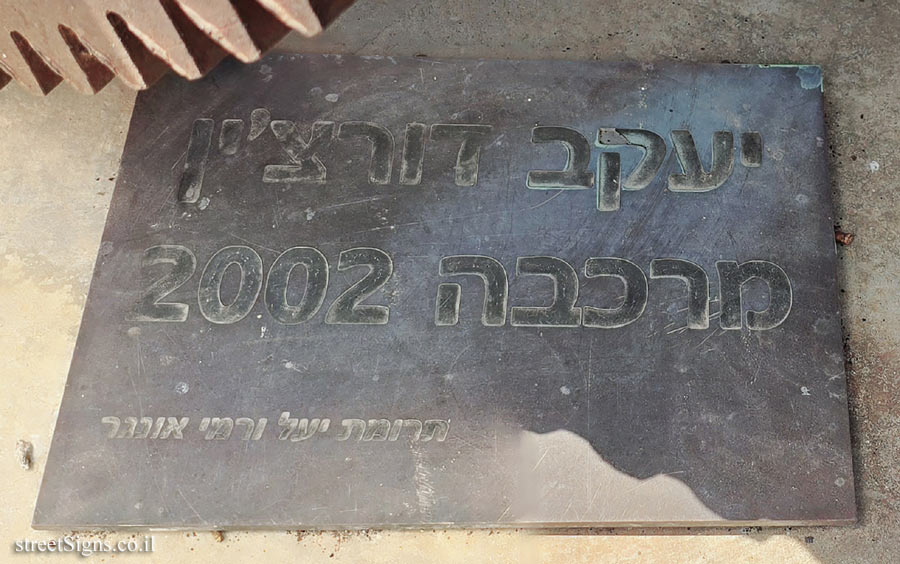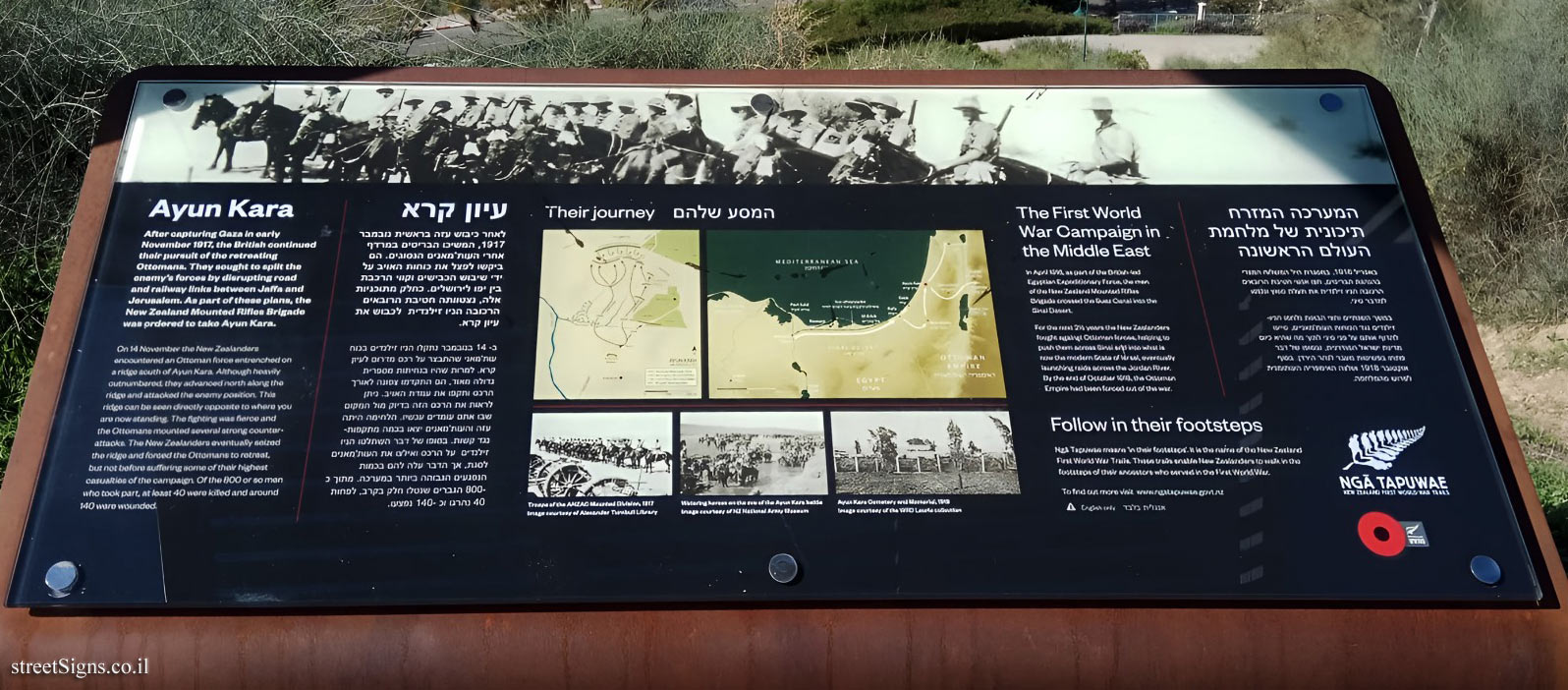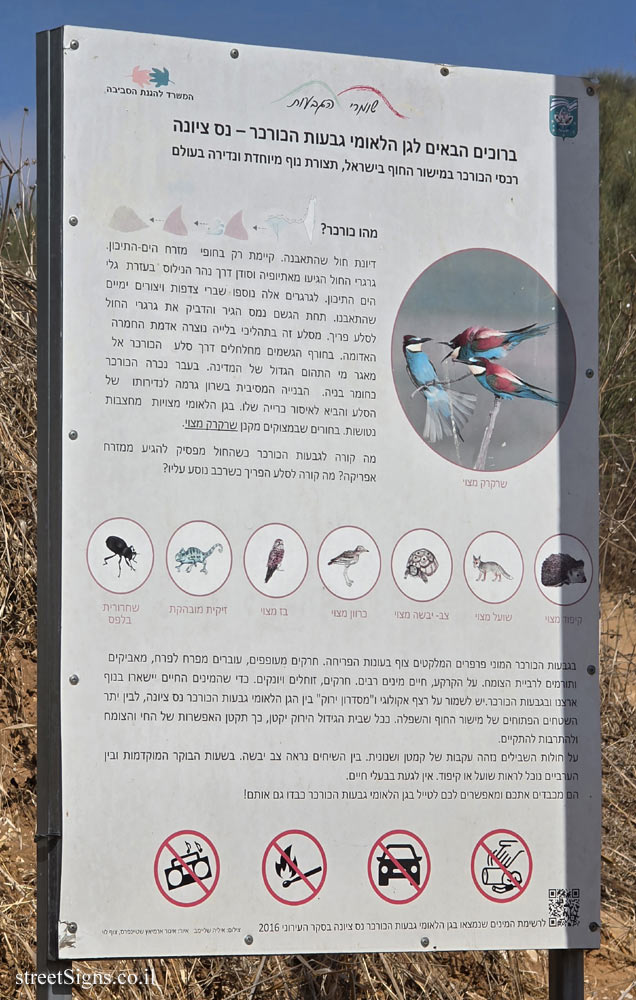The location of the New Zealand Cavalry Observatory was photographed on the same day by the same photographer
 Click for a larger image
Click for a larger image The statue mentioned in the sign is indicated in the next sign
 Click for sign's details
Click for sign's details and the observatory on the sign
 Click for sign's details
Click for sign's details The Kurkar hills are described in detail on the next sign
 Click for sign's details Translation of the text on the sign
Click for sign's details Translation of the text on the sign:
[The symbol of the city of Ness Ziona]
[Hill Guards Symbol]
[The symbol of the Ministry of Environmental Protection]
Welcome to the Tor Hills - Nes Ziona
The Kurkar ridges on the coastal plain in Israel, a special and rare landscape formation in the world
" The flowers appear on the earth; the time of singing is come, and the voice of the turtle is heard in our land;" Song of Songs
[Image: common squill]
The peak of Givat HaTor is the highest point, in the city of Nes Ziona, the name of the hill reminds us of the species of birds collared dove and European turtle dove that arrive here in the spring. In the past, the hill rose in the middle of orchards and agricultural fields. Today it is located in the northern neighborhoods of Nes Ziona and is open to green areas only in the west.
The kurkar, of which the hill is composed, is a porous, brittle sedimentary rock formed from sea sand dunes, which have eroded over many years. The kurkar rock is rare and unique in the world for the eastern Mediterranean region. Such hills were common on the coastal plain and in the lowlands. Today, there is almost no remnant left of them, due to construction, paving and agriculture.
Many plant species exist on the hill, some of which are in danger of extinction. The best known of them is the purple iris. Most of the area of the hill is natural and covered with vegetation that characterizes Kurkar ridges. In the east of the hill rise the huge and ancient "Chinese banyan" trees. In the center of the hill, a round concrete pool. In the past it was used as a drinking water reservoir and supplied water to Nes Ziona and the orchards. The paintings of Rami Meiri decorate its walls.
[Photos: Iris Argaman /Chinese banyan / Merkava 2002 / European bee-eater]
In the south of the hill, there is a surreal iron sculpture, made of rusted metal machine parts. The sculpture - "Chariot 2002" made by Israel Prize laureate Yaakov Dorchin, overlooks the developing city with its back to Givat Hator. Near the statue is an old Kurkar quarry. At the base of the cliffs, dens of foxes. The cliffs are dotted with deep holes, carved by European bee-eaters. Special birds that come to the hill in May from Africa to nest in the Kurkar cliffs. In the west of the hill, the "New Zealand Cavalry Observatory", which was established to mark the 100th anniversary of the historic battle of Ayun Kara in the First World War. In a tough and bloody battle, the New Zealanders from the Egyptian Expeditionary Force of the British Army conquered the area from the forces of the Ottoman Empire.
For the list of species found in Givat Hator Nes Ziona in the 2016 municipal survey
Photography: Ilya Shlaimb, Tsuf Levy Illustration: Igor Armiatz Steinpers
Learn about:

 Click for a larger image
Click for a larger image  Click for sign's details and the observatory on the sign
Click for sign's details and the observatory on the sign  Click for sign's details
Click for sign's details  Click for sign's details
Click for sign's details